Whippoorwill Club, New York, USA
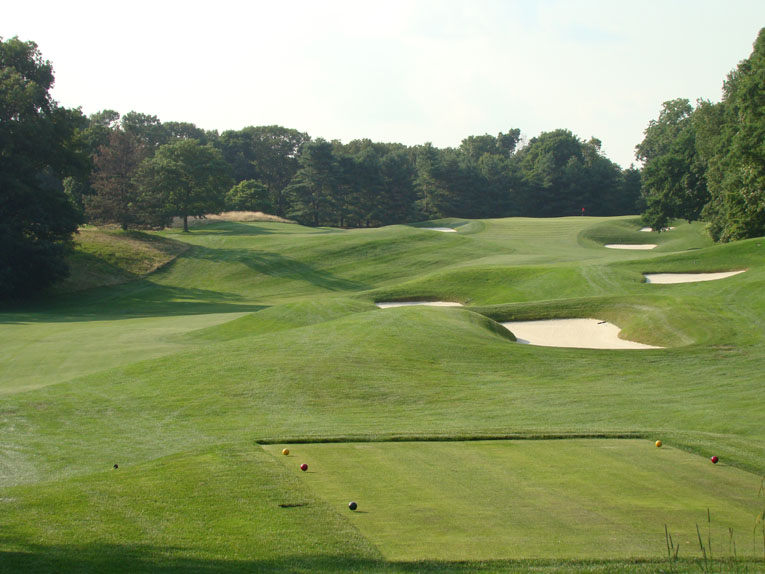
Banks’ masterpiece at Whippoorwill combines the handsome beauty of pronounced landforms and CB Macdonald’s enduring strategic elements. Take for example the split fairway fourteenth seen above with its safe option left or bold carry right, the best Bottle hole template created since Macdonald’s version at the eighth at National Golf Links of America.
Some sites better suit certain architects and some architects are better suited for a particular site. Alister MacKenzie and the sand in California, Donald Ross and the Pinehurst sandhills and Seth Raynor in the rocky Northeast at Yale and Fishers Island are marriages made in heaven. So too is Charles Banks and the Whippoorwill Club.
In 1928, Fred Ruth sought an architect to build a high quality 18 hole course over heaving, rocky terrain 35 miles north of New York City. Such land would have been deemed too inhospitable at the start of the Golden Age but by the late 1920s, modern machinery made such course construction feasible. However, it required the right architect, one capable of massive yet graceful earthmoving. Ruth knew just who to call: Charles Banks, with whom he had worked a decade earlier at another of his developments, the Mid Ocean Club on Bermuda.
Interestingly enough, a nine hole Ross course existed on the current clubhouse side of the road and it is not clear why it was deemed expendable. Nonetheless, as part of the new development, Banks was given land west of Whippoorwill Road that Ross never had access to and where holes 4 through 9 and 12 through 14 now reside.
What Banks created is a course that possesses all the necessary ingredients of a cult classic – beauty, strategy, one-off landforms, hazardous hazards and greens with great character. Indeed, the author doesn’t understand why Whippoorwill doesn’t have a legion of devoted followers like a Cruden Bay or St. Enodoc. Perhaps it’s because too many ill-advised tree plantings and small cramped bunkers impeding the scale of Banks’ masterpiece existed a few years ago. Under the watchful eye of Tripp Davis, architect on record, and Green Keeper Paul Gonzalez, such blemishes have been steadily removed. Today, the course is a design standout that showcases Banks’ distinctive style.
Who is this man Charles Banks and how did a former English teacher at the famous Hotchkiss preparatory school and graduate of Hotchkiss and Yale become interested in golf course architecture? George Bahto, the preeminent authority on Charles Blair Macdonald, Seth Raynor and Charles Banks, explains in his 1993 book The Legend of the Knoll:
Banks was a member of the school’s building committee, which in 1924 hired Raynor to build a first-rate golf course for Hotchkiss, a nine-hole course featuring two sets of tees. Banks worked closely with Raynor and, as he watched him work, reversing the original routing of the course and adding eight new tees and greens, he became fascinated with course design and construction. Soon he left the school and joined Raynor’s firm. He quickly became a partner and they collaborated on the construction of many outstanding courses. Less than two years passed and, just as Banks was beginning to attain recognition on his own merit, Seth Raynor died of pneumonia. Raynor’s death, in January 1926 at the age of 47, occurred while the firm had more than 10 courses in various stages of construction. Although grief stricken by the loss of his dear friend, Banks immediately took charge and went on to complete those courses as well as almost 20 more he designed on his own.
Sadly, George Bahto passed away in March 2014. During the previous fall, he forwarded me the following quote (source unknown) from Banks on his work at Whippoorwill:
……. theoretically, it is desirable to select ideal land, yet, practically, it is often out of the question. The Whippoorwill property, owned by the Whippoorwill Holding Corporation, is about eight hundred acres in extent. Most of this property is very rocky. Great areas through the valleys were of solid granite with scarcely any covering of soil. The land on the top of the hill had been improved for golf course purposes, but about half of this had to be abandoned and the remainder entirely reconstructed and reconditioned to make a first class course, suitable for a very high class development. The layout made by the golf architect was finally settled upon with three main things in mind: (1) To secure an outstanding course; (2) To utilize a large amount of acreage which was not suitable for building sites; (3) To beautify and enhance the value of the adjoining property. The operation was a costly one from the standpoint of comparative figures, but the results will more than justify the expense. This is a case (and there are many such) where a first class course was vital to the interests of the development. The architect had in this case to make his choice, under certain restrictions, from land, all of which was difficult in topography and expensive to build on.
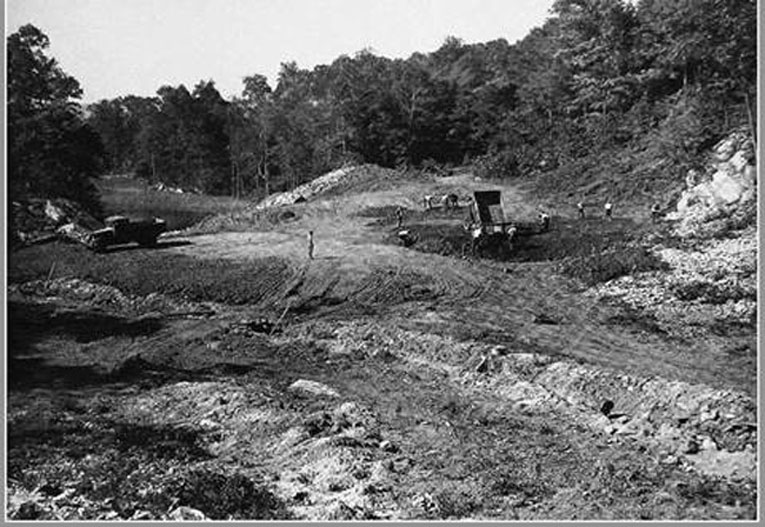
It wasn’t all peaches and cream during construction, yet as with Banff and Yale, the results were a one off course that reminds one of no other in the world. In recent times, Greenkeeper Gonzalez has undertaken stringent topdressing along with yearly Drill and Fill to incorporate as much sand as possible. Whippoorwill’s quality turf of today is long removed from its rocky origins.
Bahto spoke glowingly about Forsgate and The Knoll (where people from Jackie Gleason to Gene Sarazen once hung out) but he considered Whippoorwill to be Bank’s unquestioned masterpiece. From Banks’ statement, one can readily appreciates the challenges that he faced with this project. Yet, the course turned out so well, it is tempting to compare it not to Banks’ own work but to his mentor’s, Seth Raynor, whose name is attached to five courses in the current GOLF Magazine world top 100.
If anything, Banks is seen to be more daring than Raynor, building taller green pads (and therefore deeper bunkers) and more pronounced green contours. After all, Banks worked on and ultimately completed Raynor’s most jaw-dropping design (Yale) after Raynor’s untimely death. Both men had a knack for routing courses and were staunch disciples of the Macdonald school of strategic design. Given their appreciation of the principles found within Macdonald’s favorite template holes, Raynor and Banks courses are guaranteed to pose one appealing question after another to the golfer, as we see below.
Holes to Note
First hole, 375 yards; A really fine opening hole where Banks introduces the golfer to one of the primary challenges at Whippoorwill: controlling the flight of the ball from a sloping stance. Here, a well placed tee ball ends up below the right handed golfer’s stance, forcing him to make some minor adjustments to avoid seeing his approach bleed too far right. At 7,100 square feet, the modified, reverse Redan green provides an appealing target as one eases into the round. Yet, similar to Yale hitting the green in regulation only introduces the golfer to the challenge of getting down in two putts from 40-80 feet throughout the round.
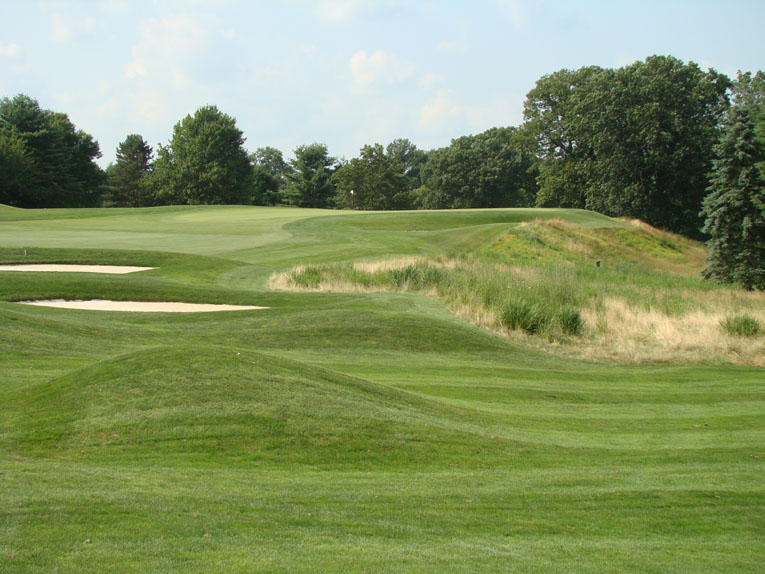
Banks uses angled greens to dictate the golfer’s approach. Take the first green. It seamlessly flows from the fairway’s angle for 50 yards but is only half as deep. A golfer stuck on the inside of the dogleg is highly disadvantaged compared to the player in the fairway who enjoys a fine view/play down the length of the green.
Second hole, 350 yards; Some members consider this their least favorite hole. That’s saying something because this hole still has presence. Well bunkered, the golfer tries to fit a tee ball between the short bunkers right and the one long left. The sight of a well struck tee ball falling nearly 70 feet into the landing area is a most pleasing one. So why the muted applause? Because the green is a rare tame one on the course and an oddity for a downhill hole of modest length. Still, the putting surface at 4,500 square feet is the smallest target on the course, has a false front, and deep bunkers wedge against its base left and right. If this is the ‘worst’ hole on the course; this is one exceptionally fortunate membership!
Fourth hole, 155 yards; After crossing Whippoorwill Road, the character of the property changes and Banks takes the golfer on an adventure across one of inland golf’s most rollicking run of holes. The fourth introduces the golfer to the first prototypical Macdonald/Raynor/Banks hole, their famous Short. Tripp Davis did well to unwind the consequence of two small oval bunkers in the front that diminished the scale of Banks’ design and that were woefully out of place on this big boned property/course.

The Short hole restored to its former glory. The pronounced indentation in the middle of the green can be discerned from the tee and is the source of many a three-putt bogey.
Fifth hole, 455 yards; Located in golf rich Westchester County, Whippoorwill’s trump card is that it possesses more ‘Oh My Gosh’ moments than any other course in the area, including even Sleepy Hollow. This is the first and standing on the back tee, the golfer can’t help but feel a little inadequate against the burly challenge before him.
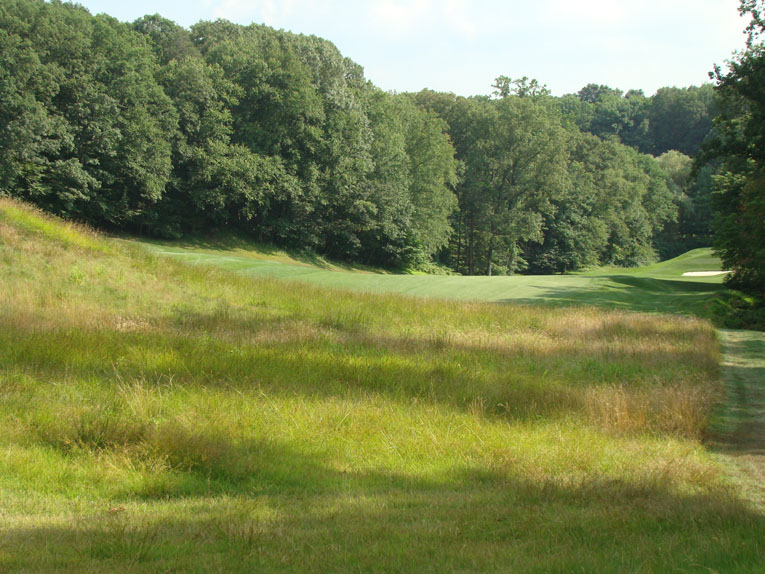
Job 1 is to find the fairway. A fifty foot – no kidding – granite cliff looms right of the fairway, so plenty of golfers shy away and use the hard left to right slope to kick their ball down the fairway.
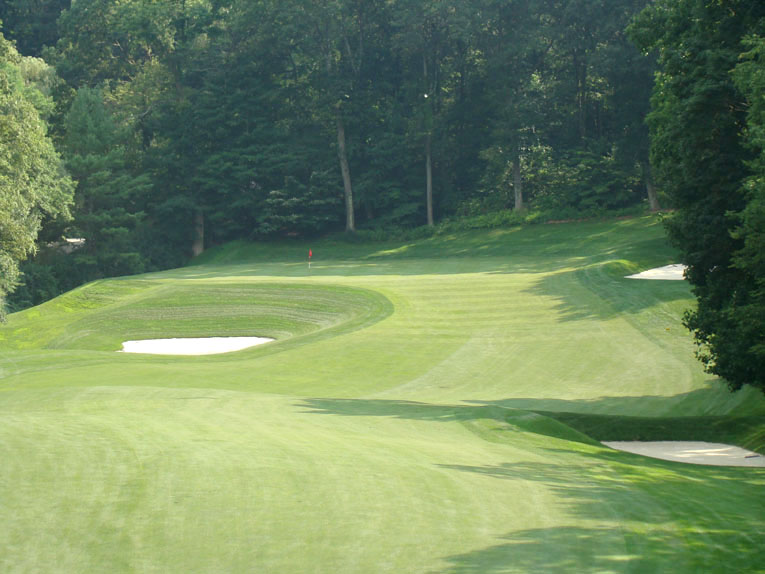
What a view! The rocky terrain is as far removed as possible from a typical parkland, heathland, or links course, yet all golfers can appreciate the tumbling landforms and bold features.
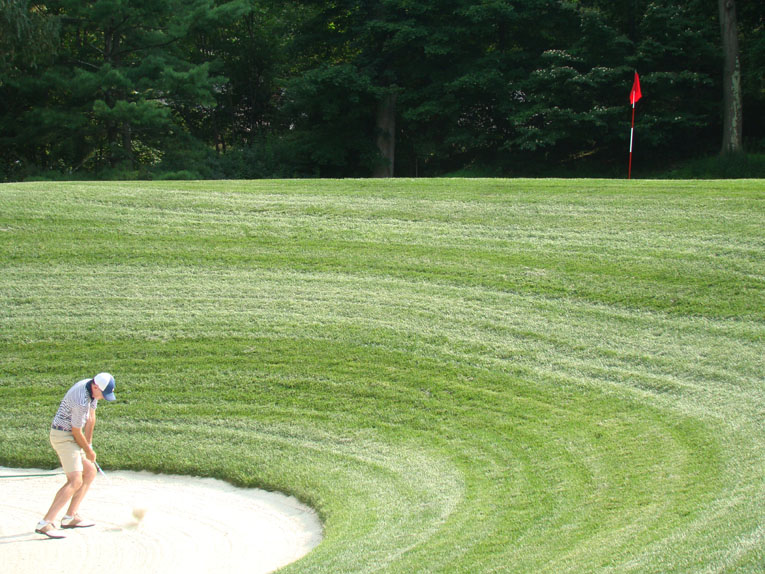
Numerous pot bunkers would fit inside the mammoth bunker front left of the 7,200 square foot green. Not to harp on it, but Whippoorwill represents its own brand of bold golf, even within the Macdonald/Raynor/Banks family of courses. Remember: this course was built in the age of hickory golf. Imagine extracting your ball from this crater with a niblick (a.k.a. nine iron)! Banks would undoubtedly think that we are all wimps, perhaps rightly so.
Sixth hole, 540 yards; Banks follows a par 4½ hole with another ½ par but this time it’s read as a par 5. Par is irrelevant and many modern architects must learn to make the game a pleasurable challenge. On such rambunctious terrain, it would be quite easy to overwhelm the golfer and Banks shrewdly sandwiched this potential birdie hole between the toughest two shot holes on the course. Ross never worked on this portion of the property so one can only wonder if he would have routed such a hole. Since Banks was so integral to the construction of Yale, he had intimate knowledge of its iconic Home hole and that surely helped him exploit the possibilities here.
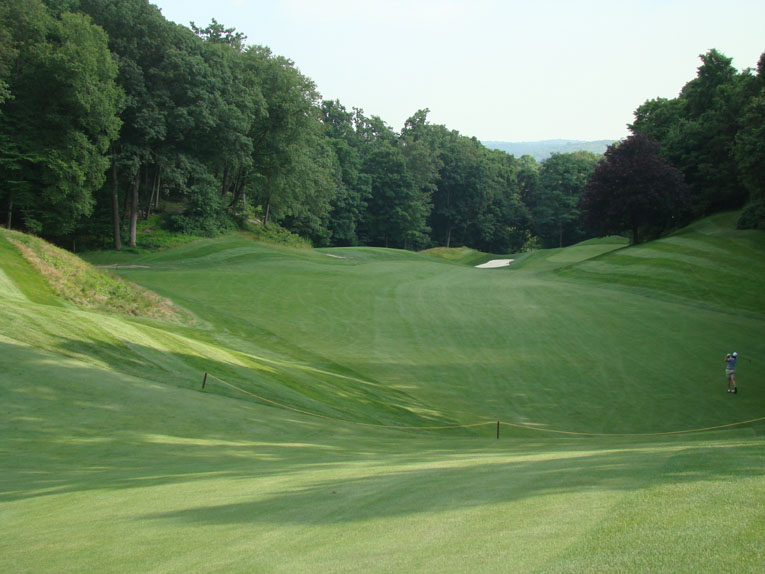
The perfect tee ball took the slope in the foreground and left the golfer above with a thrilling albeit blind ~220 yard approach down another steep embankment.
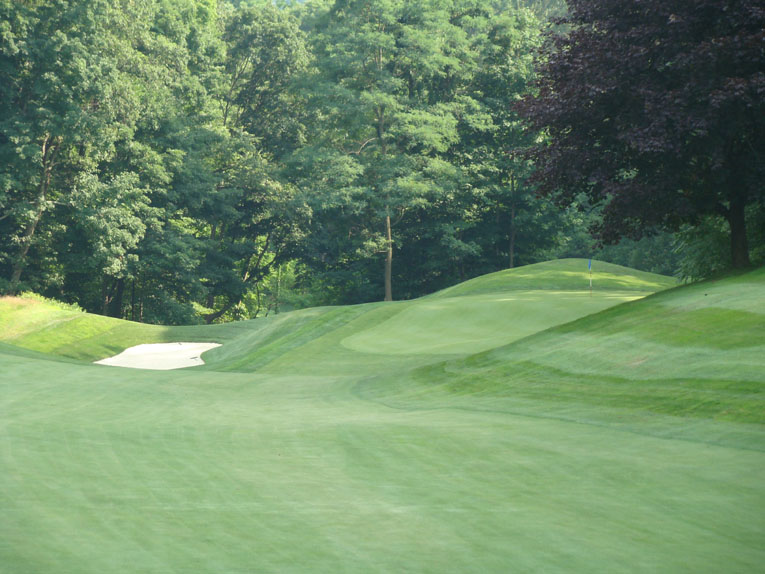
This zoomed in view shows that the green possesses its own audacious contours. In fact, the seventh fairway is behind and the Club already is considering the merits of opening up what would be a wonderful (!) view beyond this green.

It would be tragic for such a majestic hole to terminate with a dull, oval green. While other courses in the area put more pressure on putts from two to six feet, the greens at Whippoorwill have their own unique charms, as seen above. No need for greens with such character to be ever be set faster than 10 on the stimp.
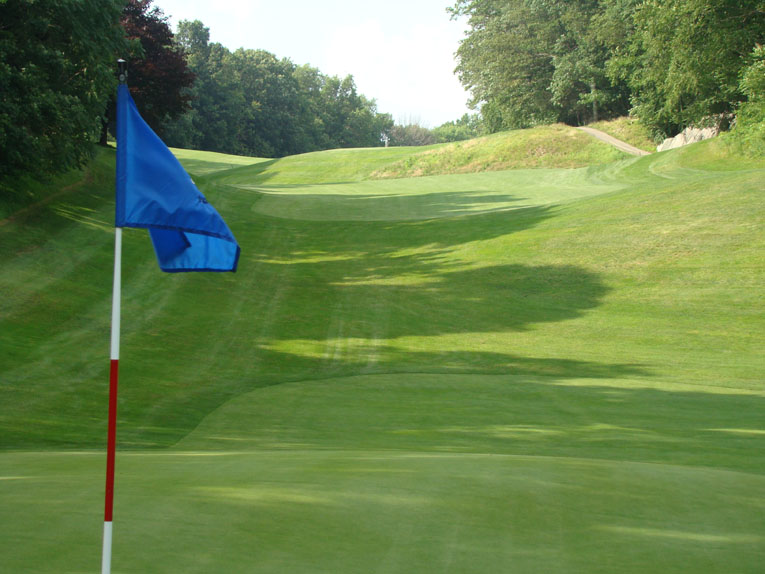
This view back up the tiered fairway gives a proper sense of the topography. There’s an apocryphal story that one of Bank’s steam shovels became stuck during the construction process and was buried underneath this fairway. The operator escaped with his life which is what the golfer hopes to do on the next hole!
Seventh hole, 425 yards; The tee shot is one for position to a fairway that swings left and then the golfer is introduced to his third OMG moment in as many holes. Down in the landing area, the only good news is that the golfer draws a generally level stance. The disconcerting news is everything else. First, the golfer is likely to face a shot in the 200 yard range. Second, his approach must scale an abrupt 50 foot precipice. Third, the green features a false front, adept at sending balls thirty (!) yards back down the fairway. While the green is of the Punchbowl variety and the hopeful golfer might take solace, the reality is harsh. Like most superlative Golden Age course greens, it was built to quickly and economically shed water. Hence, it features more back to front tilt than any green on the course. Indeed, long time head professional Jim Wahl has seen more golfers ‘de-green’ here with their first putt than at any other putting surface. This is one of those exceptional holes that is a lot of fun to play despite its bearish nature.
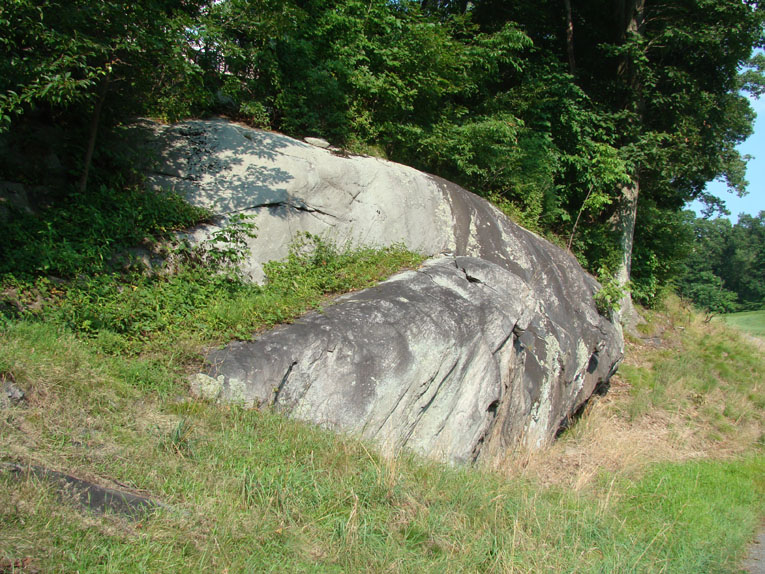
…. yet this granite wall up the left side of the fairway indicates just how Banks’ artistry was required to fit a hole into this portion of the property.

Game on! After the downhill flow of holes from the fourth to the seventh, and with holes running out before the turn near the clubhouse, one shouldn’t be surprised that the seventh and the ninth holes play dramatically uphill. Yet, it’s the spectacular manner in which Banks transports the golfer uphill at both that’s particularly noteworthy. Forget the 50 foot climb above – it’s the giant catcher’s mitt in the form of a Punchbowl green complex that soaks up the attention.
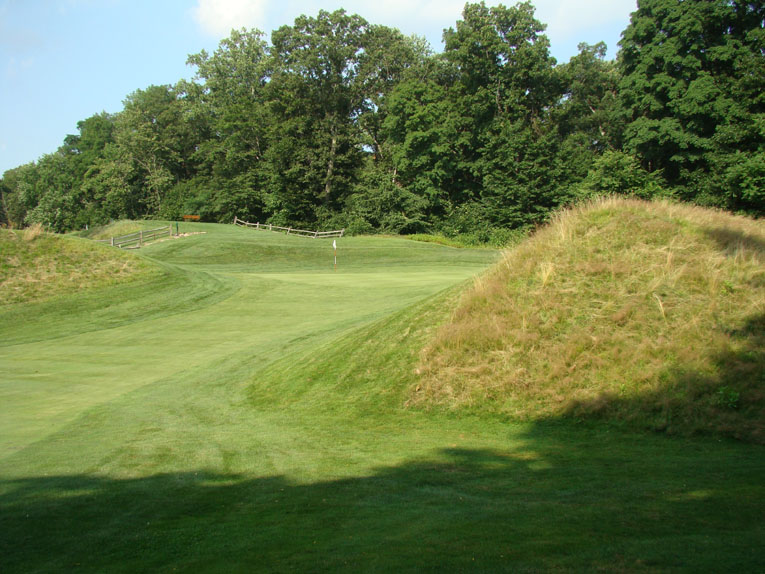
Not only are the template one shotters of Macdonald and Raynor etched into this design, so too is this Punchbowl.
Eighth hole, 200 yards; After the rigors of the last, enjoyment is needed and nothing makes an admirer of classic architecture beam more than a Biarritz. Like proper ones, the eighth features a 70 yard monumental green and enjoys a significant drop from tee to green. This enables the golfer to appreciate the joys of trying to 1) keep his ball on the front plateau, 2) the thrill of going for a hole in one on the odd occasion when the hole is in the swale or 3) sort out a way for to scoot past the swale and find the back plateau.
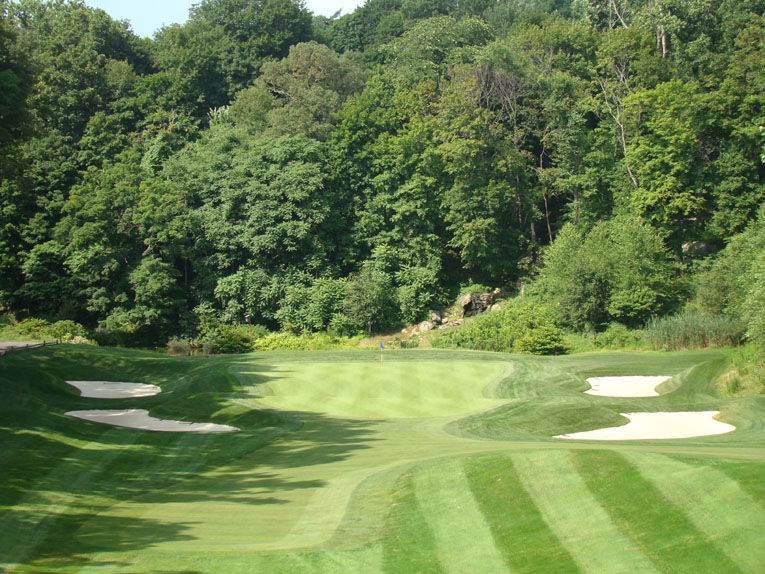
One member noted that he has hit every club from 8 iron to 3 wood into this green. The flexibility of a Biarritz is what makes it much more than a novelty hole.

This side view from the left highlights the swale, which puts a smile on the face of every Macdonald/Raynor/Banks admirer.
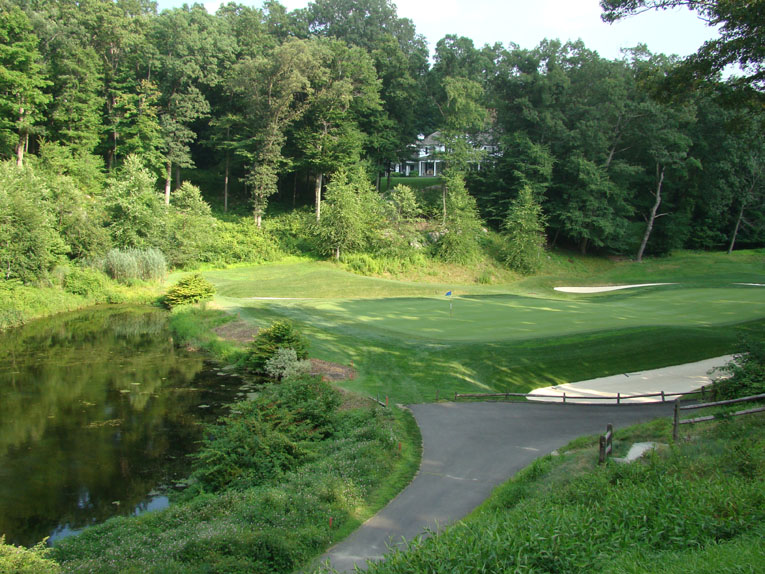
As one heads to the ninth tee and looks back, one appreciates the pretty pocket of property in which Banks located the 11,000 square foot green.
Ninth hole, 380 yards; At least the fourth, and more likely the sixth OMG moment on the front nine features an eighty foot rise from tee to green. On sharply uphill slopes, most architects struggle – and ultimately fail – to get the sight lines right and create good golf. Not so here. The mid-length par 4 has become the step-child of golf architecture. Oohs and ahs greet the cute, short two shotters and long hard ones become feared and/or admired. Yet those in the 375-425 range are the backbone of most courses, or at least those courses that you would relish playing on a regular basis. Whippoorwill’s ninth and fifteenth are such examples and nicely round out its overall offering.

The author can’t imagine any other architect turning such severe land into such fine golf as Banks did here at the mighty ninth. Creating the different plateaus both in the fairway and the green – and having them function well for golf – was no mean task.
Tenth hole, 405 yards; In detailing Banks’ design tenets George Bahto averred in his Knoll book: ‘More than anything else, he was a firm believer in a tee box elevated enough so that the golfer would be able to view the problems of the hole presented before he teed off.’ That is certainly dramatically highlighted at Whippoorwill where one enticing view after another greets the golfer from perched tees.
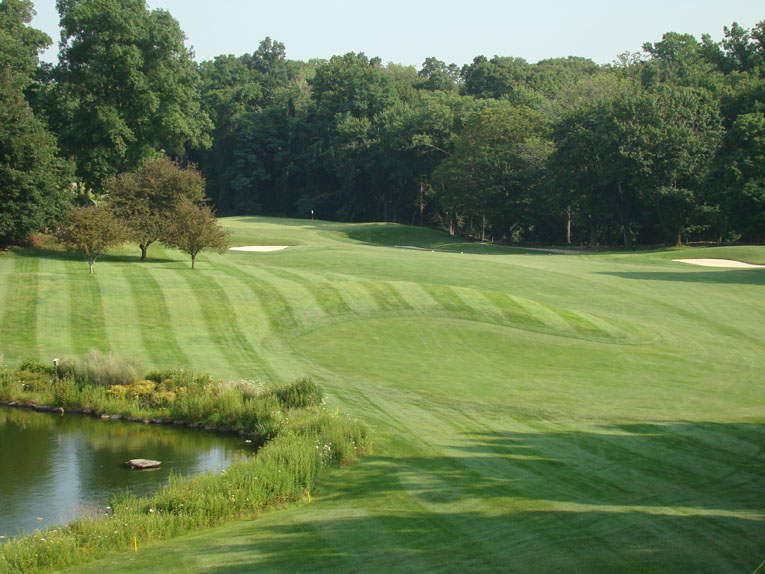
Banks’ superb placement of teeing grounds on natural high spots must surely have stemmed from his time with Seth Raynor, one of the great all-time routers of golf holes.
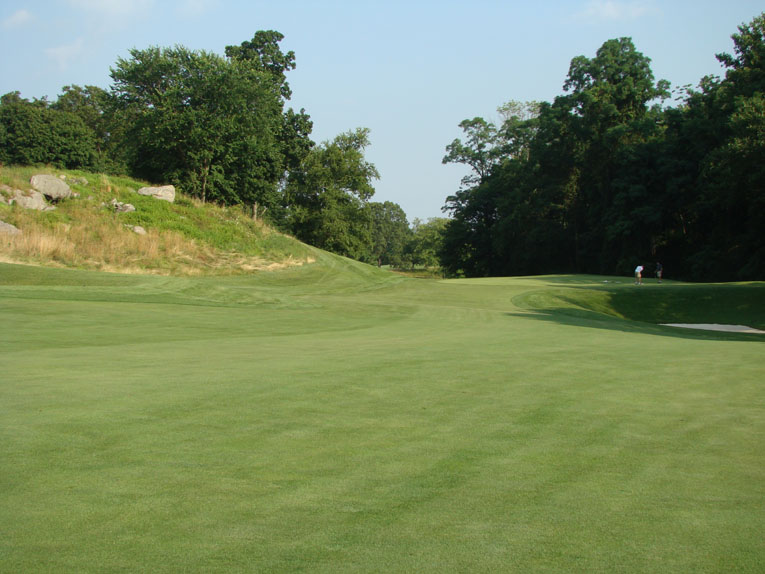
Whippoorwill occupies a huge swath of land and as such there is always much to be done. In recent times a rock-strewn hill to the left of the green has been exposed by Gonzalez and his crew to reinforce the course’s natural rugged character.
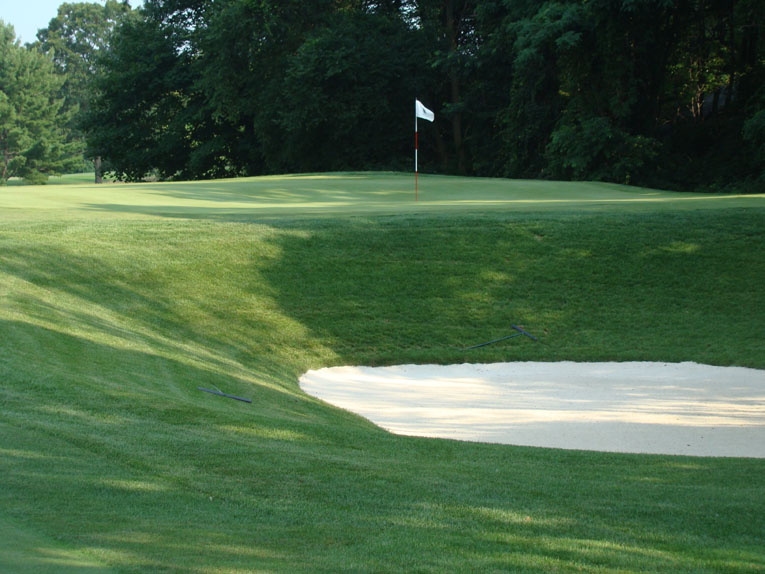
Playing angles and strategy abound at Whippoorwill. Note how the contoured green allow shots to feed down to this tough right hole location.
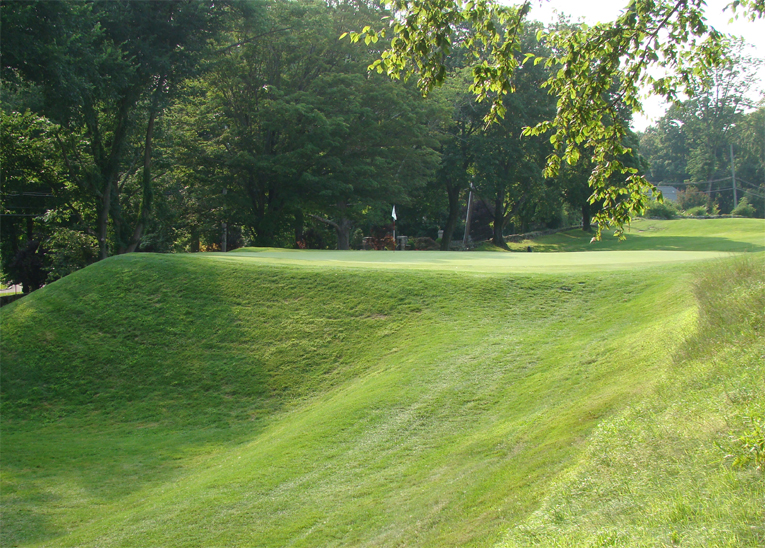
Long is not recommended! Bahto hated the moniker ‘Steam Shovel Banks’ but it is easy to understand where it came from. Banks built some of the tallest green pads the game has ever seen. ‘It really rankles me when that “reference” is used ….. he simply was very efficient and used the steam shovel and other heavy equipment to get work expedited,’ groused Bahto. Most importantly, even his tallest green pads fit well in their environs. Have another look at the photo from the tenth tee and see if you don’t agree.
Eleventh, 195 yards; This is a good, not great, Redan but even good ones are more interesting to play than most par threes! Somewhat reminiscent of Yale’s, it plays over a pond to a green that offers less right to left tilt and doesn’t feed off back left like NGLA’s or the original at North Berwick. The author’s only reservation about Banks’ body of work is his reticence for building fallaway greens (greens that slope significantly from front to back); oh well.
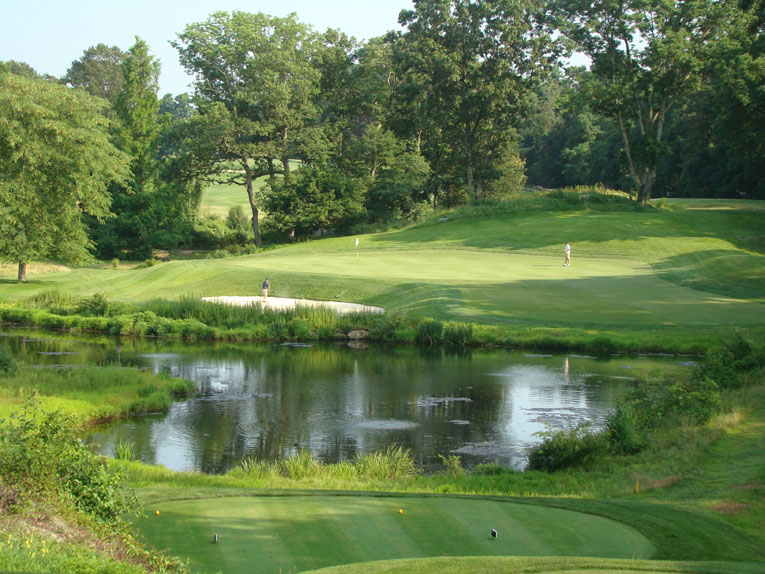
A draw that lands just short of the gentleman in white will release to the middle of the green and the elevated tee enables the golfer to admire his handiwork.
Twelfth hole, 420 yards; Straightaway holes are rarely as clever as this one where Banks infused good golf by constructing one of the course’s best greens, highlighted by a large mound in front that effectively trifurcates it into left, high middle, and right sections. Lower left hole locations are the easiest and watching an ace player hit a draw at the middle of the green and see his ball spin sharply left and down toward the hole is a thing of beauty. Such quiet, graceful moments are often absent in the work of lesser architects.
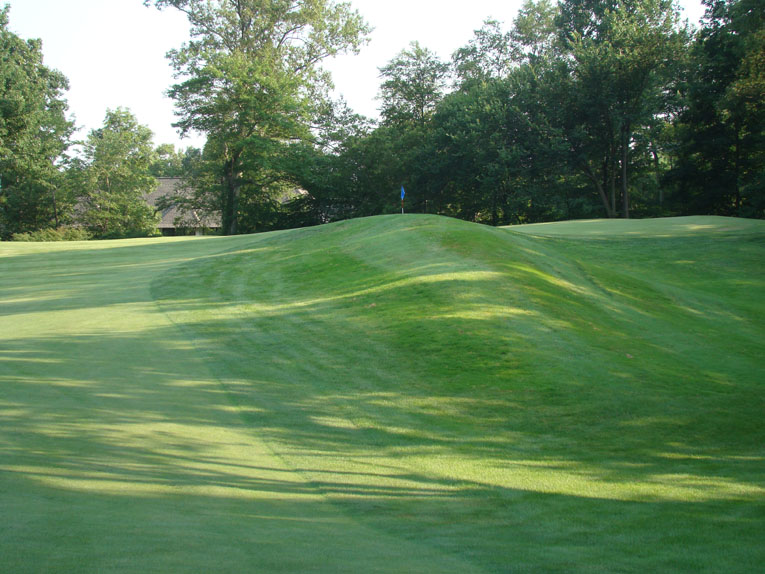
Handicapped by rock underneath, Banks did a fantastic job in giving the putting surface its graceful contours
Thirteenth hole, 320 yards; While the twelfth has real golf character, it plays over some of the least interesting land on the property and may conjure thoughts that this is where the course finally lets down. Not so! One delights to discover that not only does the course not tail off but indeed it screams toward home with a six hole stretch every bit equal to the first nine’s heroic six hole finish.

Banks’s routing over the wonderful property combined with seven bunkers and a pulpit green give this sometimes drivable par four enduring character. Technology has actually increased this hole’s fun quotient as the green becomes reachable under certain wind conditions, something not true in the age of hickory golf.
Fourteenth hole, 440 yards; Standing on the tee just 35 miles from Manhattan, the golfer could be forgiven for thinking he was in Vermont or Massachusetts. Banks’ placement of the fairway between the shoulders of a short right and long left hill is nothing less than brilliant as he created the rarest of features: a split fairway that actually functions properly. When strategic options are organically created from the architect’s imaginative use of one-off landforms, something special emerges.
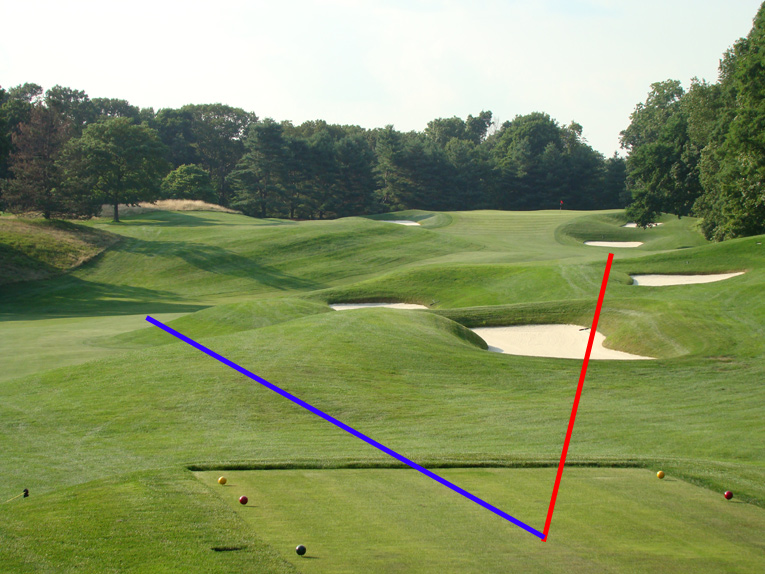
Golfers hit somewhere between the two lines as seen above. The blue is the safe path off the tee to the lower left fairway while the red is riskier but offers future rewards.
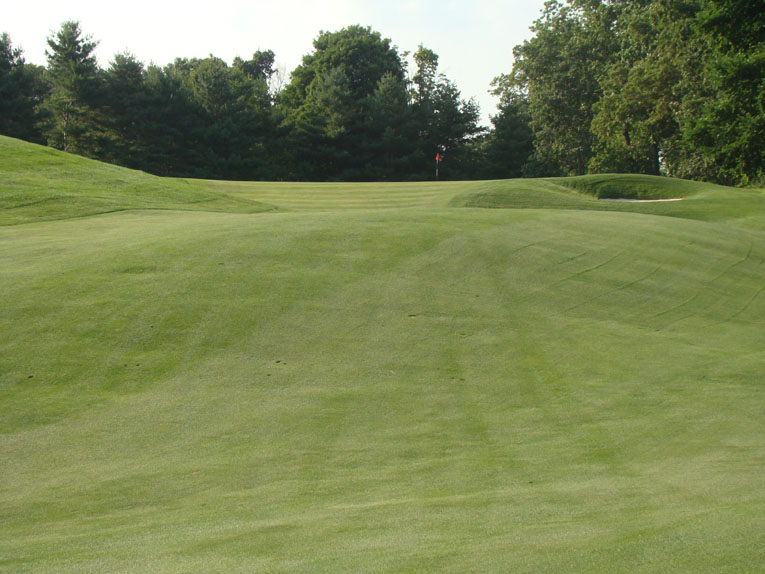
While he who takes the daring line high right ends up with a clear view of the uphill green from a much shorter distance.
Fifteenth hole, 370 yards; Back to the east side of Whippoorwill Road, one is again where Ross had worked. After the wonderful thirteenth and fourteenth, a hole over tame land would have been both jarring and a letdown. Happily, the transition is comfortable because Banks keeps the accelerator down with the creation of this driving hole over a crest with only a directional marker as a guide.
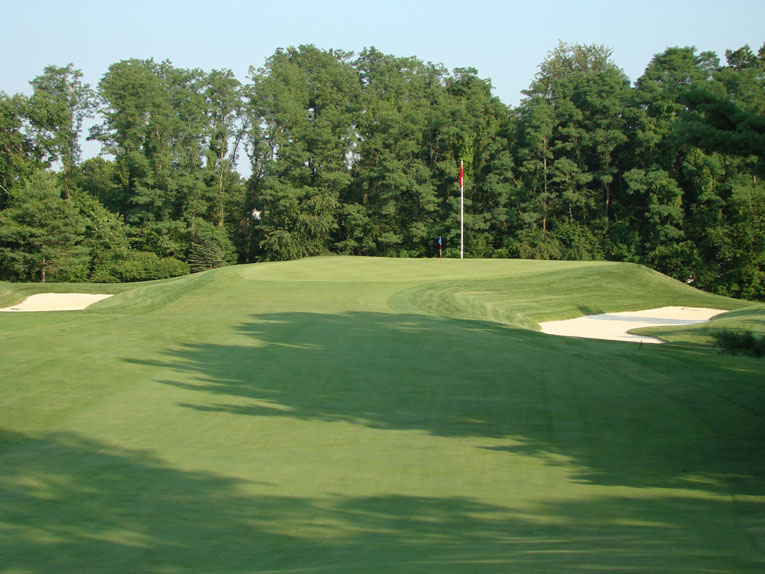
Though huge, the built-up green pad rests comfortably on the ground and presents a striking target once the golfer crests the hill.
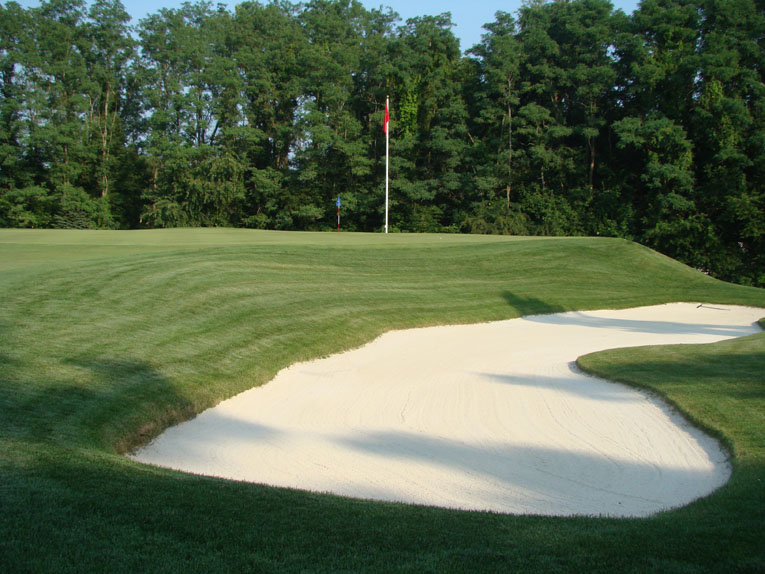
The right bunker at 52 yards in length is the longest greenside bunker on the course. As golfers have found out for over a century at St. Andrews, hitting a large green with a short iron is one thing but getting it close is something else entirely. The hole location can alter one’s approach shot by as much as three clubs on a green that is more than 100 feet deep.
Sixteenth hole, 550 yards; Given the topography, Banks didn’t have to create many fairway bunkers in order to lend the course playing interest tee to green. However, when the land didn’t readily dictate something, Banks wisely employed man-made hazards in the form of bunkers. Such is the case in the second landing zone on this long three shotter where two bunkers protrude well into the fairway from the left side. The tension created from needing to carry/play around/avoid them without veering too far right and down a slope holds the golfer’s attention on his second. The pitch is to a well defended pushed up green pad featuring a fierce left to right slope. This hole fits the definition of a classic par five, namely that each shot gets progressively more exact.

For the umpteenth time, the golfer is presented a choice: does one carry these two bunkers on his second shot for the sake of gaining a better angle into the sixteenth green for his pitch? Or play away from these bunkers and contend with the deep right greenside bunker?
Seventeenth hole, 155 yards; All the prerequisites are here for a great Eden save length. The Hill and Strath bunkers are dutifully cut left and right. Happily, recent work by Davis and Gonzalez has opened the area beyond the green exacerbating the wind’s impact. Finding a charming length hole of such quality late in the round is wonderfully refreshing. Only the penultimate holes at Sand Hills and St. George’s on Long Island spring to mind as examples in this class.
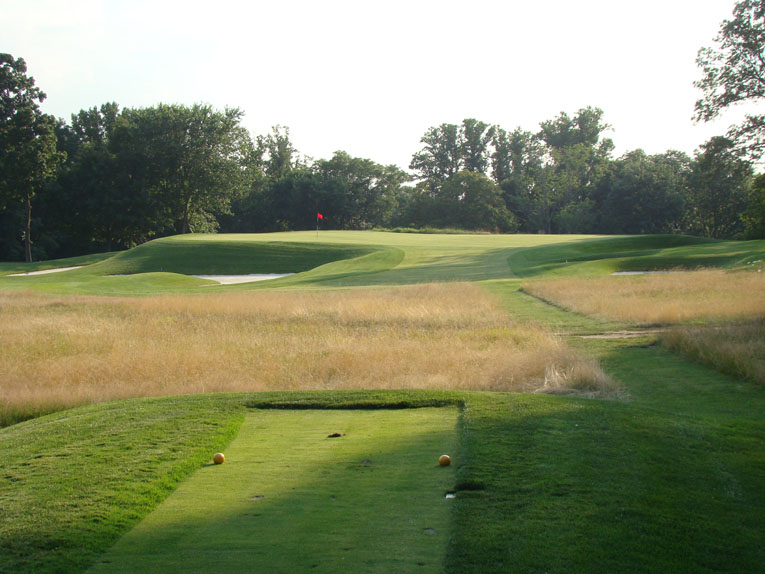
As recently as 2012, trees virtually overhung the thirty yard long strip bunker behind this Eden green complex. Recent tree work has seen those trees felled and the flag is now rarely limp on this elevated, exposed part of the property. Alas, the trees in the far background are off the club property. Pity, for if they could be felled, a ten plus mile view would be exposed!
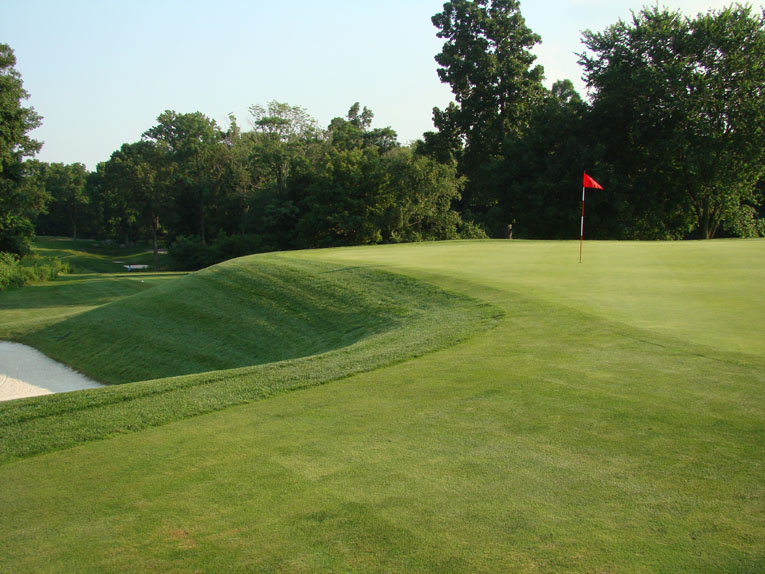
Like all great Edens, the green here is wider than deep and is once again exposed to the vagaries of the wind. Many more balls are now unceremoniously dumped into the left Hill bunker than when the green was more sheltered.
Eighteenth hole, 440 yards; While virtually unknown, there is no clearly superior Home hole in the northeast of the United States. A preposterous assertion considering the vast number of quality and world class courses in the region, you say! Yet, look below – what more could you hope for? Back in the day, a stylish golfer might fade the ball off the tee before drawing his approach into certain left hand hole locations. To the very end, Banks asks – and allows – the good golfer to show off his full arsenal of shots.
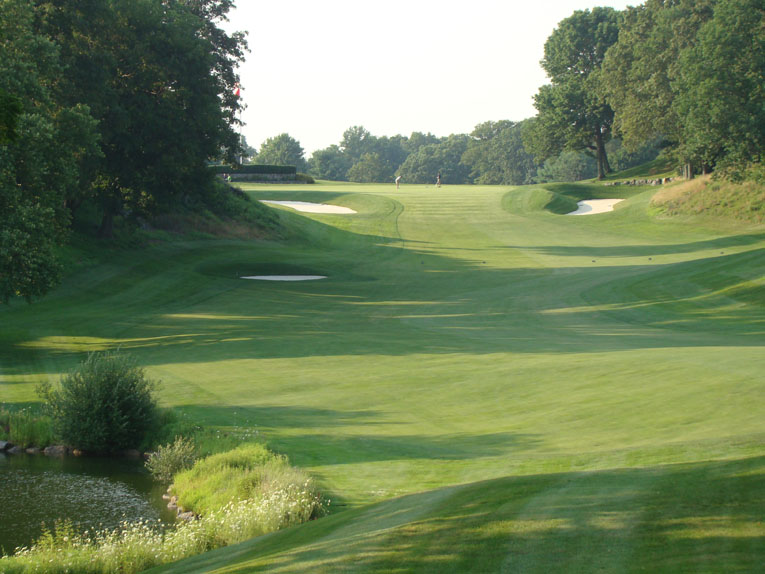
Finding a suitable ending to such an epic ride was no easy feat but Banks succeeded. This Home hole was recently enhanced by the removal of a string of cherry trees behind the green that while pretty, were poorly positioned as they stifled Banks’s infinity green.
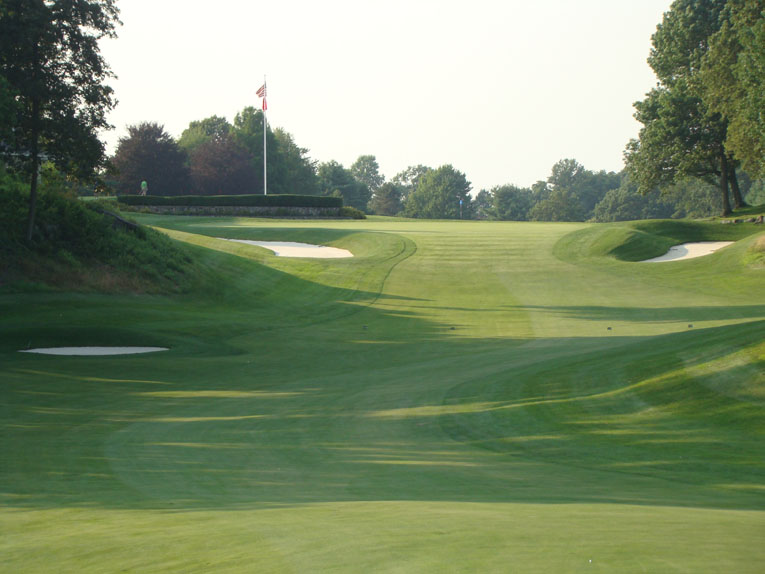
The 8,400 square foot Home green is second only to the Biarritz as the largest green on the course. Its width allows for some particularly vexing left hole locations, as is evident above.
Banks wrote a fair amount and much of his work is found in Golf Illustrated. He regularly used the word ‘expensive’ and was evidently quite a disciplined architect (not in the Stanley Thompson mold!). He took great pride in delivering courses on time and under budget while tackling difficult properties with great aplomb. His courses while strategic and handsome have stood the test of time from maintenance and drainage perspectives.
Sadly, he never capitalized on the fame that one would expect for a man who worked on courses like Yale and Yeamans Hall with Raynor and built originals like Whippoorwill, Forsgate and The Knoll. He was done in by the Great Depression and then his health. He succumbed to a heart attack in 1931 while working on the sporty Castle Harbour course in Bermuda. His passing at the young age of 48 is eerily reminiscent of Seth Raynor’s untimely death.
The greatest courses in the world – as defined by their ability to stir a strong visceral reaction – feature ‘one of a kind holes’ where a master architect exploited unique landforms. Examples include Eastward Ho!, Royal Hague, Fishers Island and Yale. Whippoorwill belongs in this category, it’s that good, that memorable – and that much fun.
The End


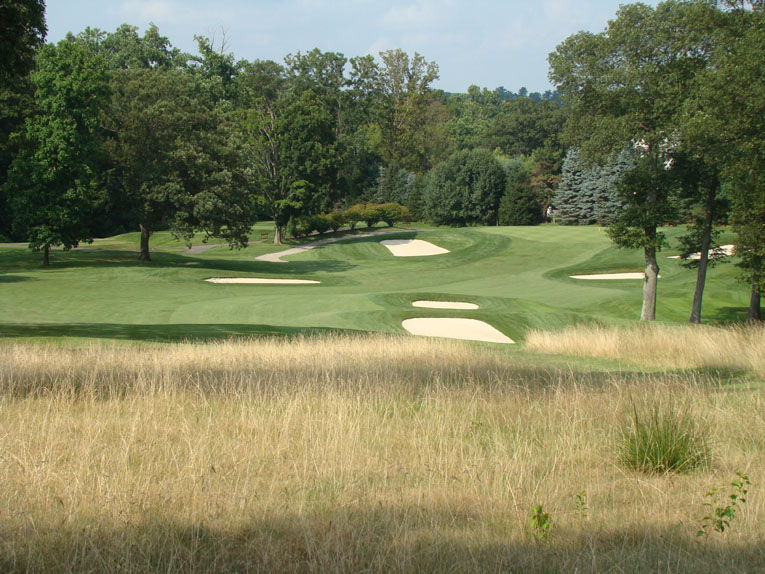
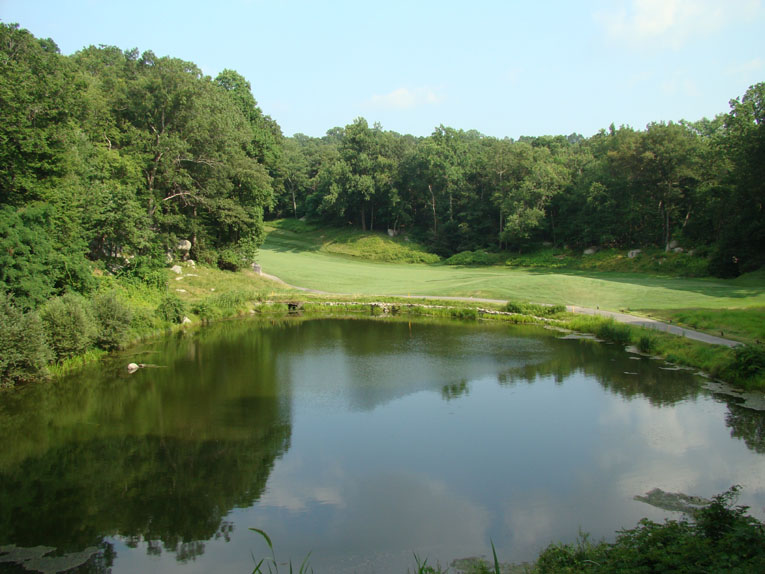
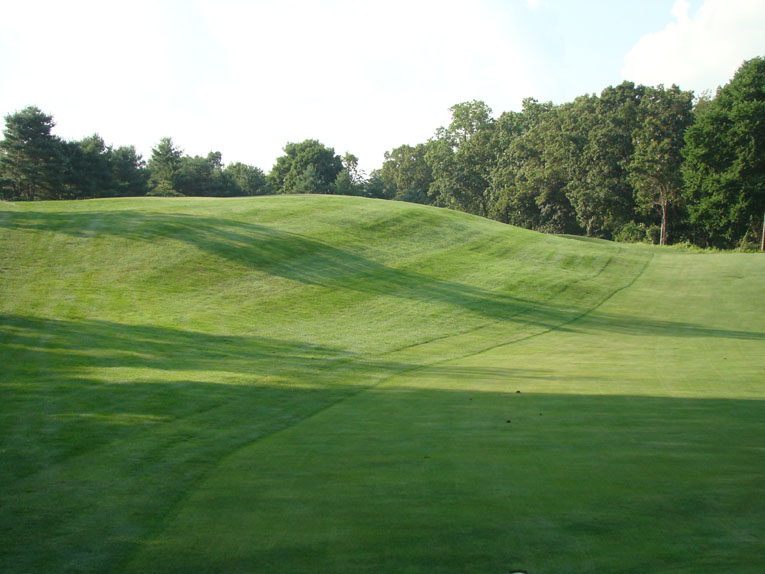
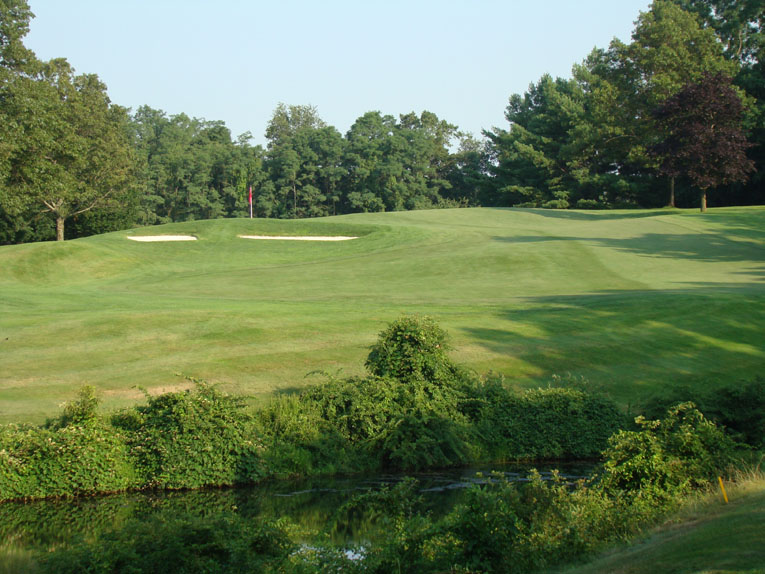



![The Park, West Palm (Lit 9) [2023]](https://golfclubatlas.com/wp-content/uploads/2024/12/IMG_7092-2-scaled-500x383.jpg)


